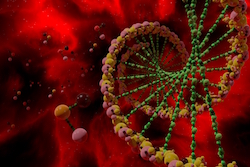Faster way to test new gene therapies
A gene defect affects the immune system of people suffering from CGD. Their white blood cells are unable to kill ingested bacteria and fungi, causing life-threatening infections and excessive inflammatory reactions that have severe consequences. While this can be treated effectively by transplanting blood forming cells through bone marrow donation, finding a matching stem cell donor is all too often a matter of luck. When no donor matches, a few locations globally will carry out gene therapy. But for this to be used clinically, the efficacy of the treatment has to be established. The testing process depends on cellular models and currently the process is labour intensive, lengthy and expensive. A team of researchers headed by Dr Janine Reichenbach, a professor and Co-Head of the Division of Immunology at the University Children's Hospital Zurich, has developed a new cellular model that enables researchers to test the efficacy of new gene therapies much more efficiently. ‘We used Crispr/Cas9 technology to change a human cell line so that the blood cells show the genetic change typical of a specific form of Chronic Granulomatous Disease,’ explains Professor Reichenbach. The standard way of testing has been to use patients’ skin cells that are reprogrammed into stem cells, a time consuming and expensive process. The new testing system will be more cost effective. ‘Our system makes the process faster and cheaper which means we’ll be able to develop new gene therapies for affected patient more efficiently,’ she adds. In more detail, to test the vectors of potential benefit to people suffering from p47phox-deficient chronic granulomatous disease (CGD), the article published in the journal Scientific Reports explains researchers have generated a cellular model consisting of regularly interspaced, short palindromic repeats (CRISPR)/Cas9. This introduces a GT-dinucleotide deletion (ΔGT) mutation in p47phox encoding NCF1 gene in the human acute myeloid leukemia PLB-985 cell line. The research has also lead to a different approach to the transfer of healthy copies of the gene into the affected cells. So far therapies have used modified, artificial viruses as transporters, but some patients went on to develop cancer so this first generation of viral correction systems is now outdated. Dr Reichenbach’s team now use lentiviral, self-inactivating gene therapy that she describes as more efficient and safer. She believes these to be an intermediate stage only, and looks forward to the future use of genome editing to provide greater precision. However, Science Daily suggests this will take another five to six years before precision gene surgery is available clinically. An exciting approach to treatment furthered by EU support CELL-PID (Advanced cell-based therapies for the treatment of Primary ImmunoDeficiency) and NET4CGD (Gene therapy for X-linked Chronic Granulomatous Disease - CGD) are two projects that have received funding from the EU. The University Children's Hospital Zurich is one of three European centers able to use this new gene therapy in an international clinical phase I/II study to treat patients with Chronic Granulomatous Disease as part of NET4CGD. For more information, please see: NET4CGD project website CELL-PID CORDIS project webpage
Countries
France, Italy



